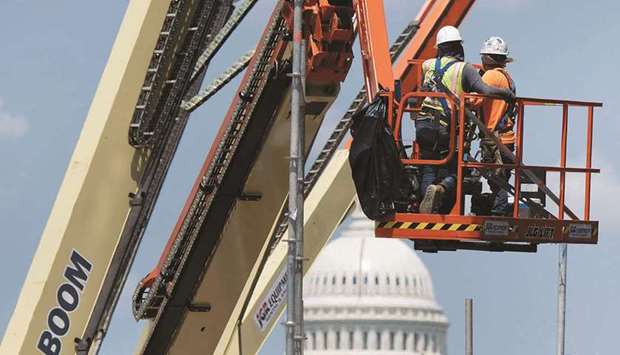US employment growth slowed considerably in November amid job losses at retailers and in local government education, but the unemployment rate plunged to a 21-month low of 4.2%, suggesting the labour market was rapidly tightening.
The four-tenths-of-a-percentage-point decline in the jobless rate from October reported by the Labor Department in its closely watched employment report on Friday occurred even as nearly 600,000 people entered the labour force.
“Don’t be fooled by the measly payroll jobs gain this month because the economy’s engines are actually in overdrive as shown by the plunge in joblessness,” said Christopher Rupkey, chief economist at FWDBONDS in New York.
The survey of businesses showed nonfarm payrolls increased by 210,000 jobs last month.
Data for October was revised up to show employment rising by 546,000 jobs instead of 531,000 as previously reported.
That left employment 3.9mn jobs below its peak in February 2020.
“While that still indicates that the economy is about 10 months away from closing the total payrolls employment gap, the unemployment rate is closing at a relatively rapid rate to the Federal Reserve’s estimate of full unemployment,” said Brian Bethune, professor of practice at Boston College.
Fed Chair Jerome Powell told lawmakers this week that the US central bank should consider speeding up the winding down of its massive bond purchases at its December 14-15 policy meeting.
Economists polled by Reuters had forecast that payrolls would advance by 550,000 jobs.
Estimates ranged from as low as a gain of 306,000 jobs to as high as 800,000.
Employment growth was held back by the leisure and hospitality sector, which added only 23,000 jobs after an increase of 170,000 in the previous month.
Professional and business services payrolls increased by 90,000 jobs.
Transportation and warehousing added about 50,000 jobs and construction payrolls rose by 31,000. Manufacturing employment increased by 31,000.
Hiring continues to be hampered by worker shortages. November was the second full month of hiring following the expiration of federal government-funded unemployment benefits in early September. There were 10.4mn job openings at the end of September.
The modest job growth will probably do little to temper expectations that the economy was poised for stronger growth this quarter after hitting a speed bump in the third quarter.
Consumer spending and manufacturing activity have been strong.
But the spread of the new, highly contagious Omicron variant of Covid-19 poses a risk to the brightening picture.
While little is known about the impact of Omicron, some slowdown in hiring and demand for services is likely, based on the experience with the Delta variant, which was responsible for the slowest economic growth pace in more than a year last quarter.
But there are signs that some of the millions of Americans who lost their jobs during the pandemic-induced recession are wading back into the labour force.
The smaller survey of households showed 594,000 people entered the labour force last month.
That raised the labour force participation rate, or the proportion of working-age Americans who have a job or are looking for one, to 61.8% from 61.6% in October.

A construction crew works at a site near the US Capitol in Washington, DC. US employment growth slowed considerably in November amid job losses at retailers and in local government education, but the unemployment rate plunged to a 21-month low of 4.2%, suggesting the labour market was rapidly tightening.


